LSA Warp 1 Power Stereo Amplifier by Greg Voth
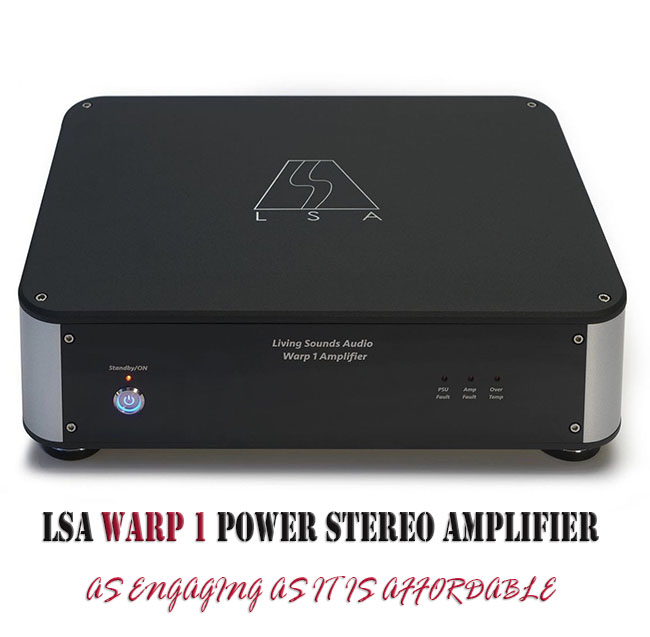
 The LSA Discovery Warp 1 stereo power amplifier has been one engaging roommate over this past month. I’ve listened to it in various combinations with my other equipment nearly every day, and its 150 WPC into 8 Ohms / 250 into 4 Ohms never let me down. My Tekton Double Impact floorstanders, with their 98.82dB sensitivity, loved this small wonder, as did the more expensive and 86dB sensitive FinkTeam KIM monitors. Owner Walter Liederman and the team at Living Sounds Audio (The LSA Group) always offer (factory direct) compelling components at near-irresistible prices. It’s to his credit that, through this pandemic, the LSA brand increased its market share while others have seen theirs shrink. The Warp 1 stereo power amplifier is yet another fine example. The LSA Discovery Warp 1 follows the same styling cues as previous LSA electronics (herein Warp 1) – its curved aluminum corner elements, matte black powder-coated plates, and white top panel LSA logo make for a handsome esthetic.
The LSA Discovery Warp 1 stereo power amplifier has been one engaging roommate over this past month. I’ve listened to it in various combinations with my other equipment nearly every day, and its 150 WPC into 8 Ohms / 250 into 4 Ohms never let me down. My Tekton Double Impact floorstanders, with their 98.82dB sensitivity, loved this small wonder, as did the more expensive and 86dB sensitive FinkTeam KIM monitors. Owner Walter Liederman and the team at Living Sounds Audio (The LSA Group) always offer (factory direct) compelling components at near-irresistible prices. It’s to his credit that, through this pandemic, the LSA brand increased its market share while others have seen theirs shrink. The Warp 1 stereo power amplifier is yet another fine example. The LSA Discovery Warp 1 follows the same styling cues as previous LSA electronics (herein Warp 1) – its curved aluminum corner elements, matte black powder-coated plates, and white top panel LSA logo make for a handsome esthetic.
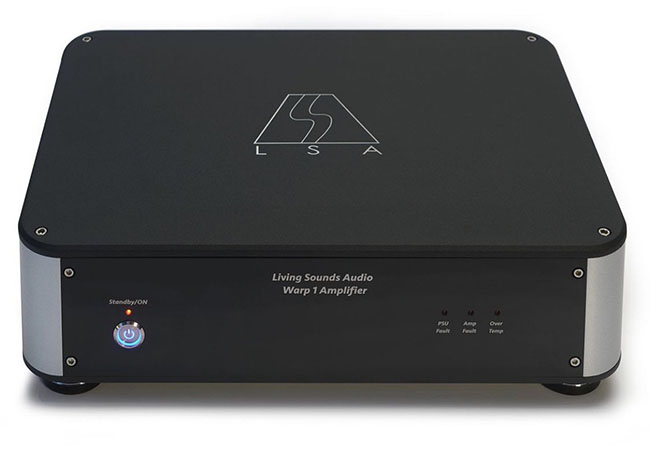
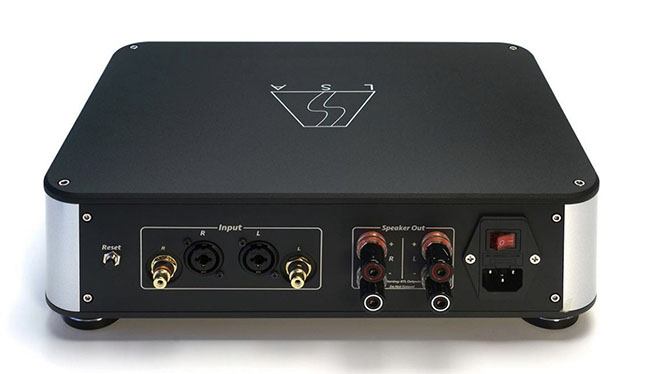
The amplifier’s dimensions are 14″ wide x 10″ deep x 3″ high. The Warp 1 allows both balanced and unbalanced operations so that I can use it in numerous configurations. I coupled different preamps with the Warp 1, first using the Discovery LSA DPH-1 digital preamplifier/DAC/headphone amplifier, which LSA considers its mate. I also spent time with the PS Audio Stellar Gain Cell DAC, followed by my vintage Conrad Johnson PV-5 preamplifier. Both the DPH-1 and Gain Cell DAC include internal DAC’s. With the CJ PV-5, I inserted the Denafrips Ponus II R2R DAC into the rig.
The Warp 1 provides LEDs for standby and power along with PSU Fault, Amp Fault, and Over TempLED indicators on its front panel. You’ll note that there’s a flicker of an LED or two at startup as the unit goes through its power-up sequence. On its rear face, the Warp 1 provides:
- Both balanced (XLR) and unbalanced (RCA) inputs.
- A reset button.
- Two pairs of speaker binding posts.
- A main power switch.
- An IEC input for use with your preferred power cable.
Meet the Warp 1 Lead Engineer, Viet Nguyen
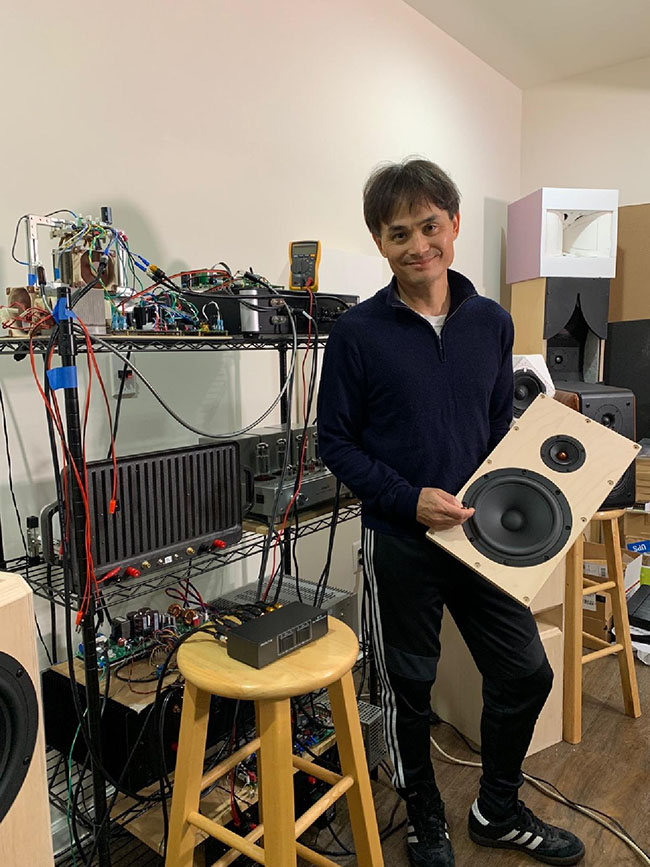
 LSA’s Mark Schifter did a good part of the industrial design and overall cosmetic look and feel for the Warp 1, but he says, “… this is Viet’s baby all the way,” referring to lead engineer Viet Nguyen (above photo). Schifter continued, “Viet and he “sort of found each other. He is very famous in the DIY world (some of the greatest gear invented has come from this area).” I spoke with Viet Nguyen, lead engineer of the Warp 1 project, midday on a Saturday in August. Our conversation covered a wide range of topics, including his phone’s 202 area code, which turned the conversation to his proximity to Washington, DC, might entail. Nguyen’s day job is managing spacecraft programs, and he’s lived in and around DC for 11 years. Before this, he lived in Cleveland. Before this work, he was a research engineer in a lab.
LSA’s Mark Schifter did a good part of the industrial design and overall cosmetic look and feel for the Warp 1, but he says, “… this is Viet’s baby all the way,” referring to lead engineer Viet Nguyen (above photo). Schifter continued, “Viet and he “sort of found each other. He is very famous in the DIY world (some of the greatest gear invented has come from this area).” I spoke with Viet Nguyen, lead engineer of the Warp 1 project, midday on a Saturday in August. Our conversation covered a wide range of topics, including his phone’s 202 area code, which turned the conversation to his proximity to Washington, DC, might entail. Nguyen’s day job is managing spacecraft programs, and he’s lived in and around DC for 11 years. Before this, he lived in Cleveland. Before this work, he was a research engineer in a lab.
Nguyen became a bit of a legend on DIY audio sites, offering amp ideas that piqued the interest of a horde of DIY’er’s anxious for projects to build, very often reporting back, “Sounds great!.” His designs caught the eye of manufacturers on Aliexpress in China, and he soon found that his designs were incorporated in several overseas products, complete with some accidental errors in the schematics on his part. Nguyen now purposely includes benign errors in his designs as an easy way to spot when one of his designs has been copied.
 In this short span of time, he’s designed speakers, power amplifiers, headphone amplifiers, phono stages, hybrid tube preamps, and now, the Warp 1 Class D power amplifier for LSA. With Mark Schifter acting as the “buffer” between a cadre of like-minded, talented audio fanatics, an idea can attain physical form in no time thanks to Schifter’s far-reaching network of production sources. Nguyen collaborates with many other talented and very experienced designers whom he met on DIY Audio, and together, they have collaborated on numerous projects. His collaborators include JPS64 and Jhofland on DIY Audio, who bring a collective electronics design experience of 85 years to the table. Nguyen says everything he knows about designing amplifiers he learned through collaborating with Hugh Dean (AKSA on DIY Audio), the founder of Aspen Amplifiers PLC in Melbourne, on their amp projects together on the DIY Audio forum. Nguyen was first the beta tester and verification builder for Dean’s superb amplifier designs. Later, Nguyen learned how to design amplifier topologies that sound natural and convey superb foot-tapping good dynamics. Many of his amp designs concentrate on single-ended Class A amplifiers for their ability to convey music in an honest and non-fatiguing way.
In this short span of time, he’s designed speakers, power amplifiers, headphone amplifiers, phono stages, hybrid tube preamps, and now, the Warp 1 Class D power amplifier for LSA. With Mark Schifter acting as the “buffer” between a cadre of like-minded, talented audio fanatics, an idea can attain physical form in no time thanks to Schifter’s far-reaching network of production sources. Nguyen collaborates with many other talented and very experienced designers whom he met on DIY Audio, and together, they have collaborated on numerous projects. His collaborators include JPS64 and Jhofland on DIY Audio, who bring a collective electronics design experience of 85 years to the table. Nguyen says everything he knows about designing amplifiers he learned through collaborating with Hugh Dean (AKSA on DIY Audio), the founder of Aspen Amplifiers PLC in Melbourne, on their amp projects together on the DIY Audio forum. Nguyen was first the beta tester and verification builder for Dean’s superb amplifier designs. Later, Nguyen learned how to design amplifier topologies that sound natural and convey superb foot-tapping good dynamics. Many of his amp designs concentrate on single-ended Class A amplifiers for their ability to convey music in an honest and non-fatiguing way.
Nguyen has found an outlet for the production of his creations, where a sketch on paper can lead quickly to a physical product in hand in record time. One day, Schifter handed Nguyen a raw cabinet and some drivers and asked him to design a 2-way speaker. The planar tweeter that Schifter chose sounded great, but Nguyen had a hard time mounting it as it had no flush flat surfaces. Nguyen then designed his waveguide and printed it with a 3D printer in plastic to allow the tweeter to be properly mounted to the cabinet. To his surprise, his homegrown waveguide reduced the measured distortion from 3% down to 0.3%, extended the frequency range top and bottom, and improved the flatness of the response. This waveguide also transformed the speaker’s sound quality value, allowing it to compete with speakers at ten times its price.
The build of the Warp 1 contains nothing cheap, nothing generic, only name-brand components. For example, the output inductors are made of thick flat copper wire designed to carry 27A – it is little details like this make the amp exceptional. The inductors alone cost over $25, where many manufacturers are willing to spend only $4 on such inductors. Nguyen uses LT Splice for design simulation, saying simulation tools are now so good that he can build his ideas virtually and predict the outcome of a physical prototype. He considers even order harmonics the most pleasant in an amp design, pointing out that odd harmonic content tends to grate on the listener, causing fatigue and shortening listening pleasure.
The Warp 1 has a custom-made, ultra-quiet, and powerful 600W switch-mode power supply, which provides a lot of headroom and -125 dB noise floor with no 60Hz mains frequency bump. The amp is dead silent when no music is playing.
Internally Speaking
 Internally, LSA’s initial inspiration for the Warp 1 amplifier was the incorporation of the Texas Instruments TPA3255 “Purepath” Class D device, a high-performance amplifier “that enables true premium sound quality with Class-D efficiency,” according to the TI’s website. Quoting the site here, “It features an advanced integrated feedback design and proprietary high-speed gate driver error correction (PurePathTM Ultra- HD). This technology allows ultra-low distortion across the audio band and superior audio quality.” LSA didn’t stop there, as the utmost care was taken in the layout design and high-performance component selection to unlock the amplifier’s real promise. The Warp 1’s TI TPA3255 “Purepath” core is supported with custom made-state-of-the-art low noise power supply and signal input buffer preamp. Its 600-watt switch-mode power supply provides abundant power without hesitation. The custom-made buffer pre accepts both balanced and unbalanced sources, using a Texas Instruments OPA 1656 “op amp” for signal conversion and amplification, which includes a DIP switch allowing selectable gains, from 0db, 6dB, 14dB, and 20dB to match any source. The factory setting of the TPA3255 amp has a necessary gain of 22dB, augmented by a 6dB setting in the input buffer, for an overall increase of 28dB – desirable for most applications. These selectable gains allow the user a raft of choices when inserting less powerful sources into the mix (like: a lower gain preamplifier). Though the highest gain setting of 20dB is included, the amp’s maker says, “We would prefer that the 20dB setting not be used as this is just too much gain for most applications.” Still, it’s nice to have the option available.
Internally, LSA’s initial inspiration for the Warp 1 amplifier was the incorporation of the Texas Instruments TPA3255 “Purepath” Class D device, a high-performance amplifier “that enables true premium sound quality with Class-D efficiency,” according to the TI’s website. Quoting the site here, “It features an advanced integrated feedback design and proprietary high-speed gate driver error correction (PurePathTM Ultra- HD). This technology allows ultra-low distortion across the audio band and superior audio quality.” LSA didn’t stop there, as the utmost care was taken in the layout design and high-performance component selection to unlock the amplifier’s real promise. The Warp 1’s TI TPA3255 “Purepath” core is supported with custom made-state-of-the-art low noise power supply and signal input buffer preamp. Its 600-watt switch-mode power supply provides abundant power without hesitation. The custom-made buffer pre accepts both balanced and unbalanced sources, using a Texas Instruments OPA 1656 “op amp” for signal conversion and amplification, which includes a DIP switch allowing selectable gains, from 0db, 6dB, 14dB, and 20dB to match any source. The factory setting of the TPA3255 amp has a necessary gain of 22dB, augmented by a 6dB setting in the input buffer, for an overall increase of 28dB – desirable for most applications. These selectable gains allow the user a raft of choices when inserting less powerful sources into the mix (like: a lower gain preamplifier). Though the highest gain setting of 20dB is included, the amp’s maker says, “We would prefer that the 20dB setting not be used as this is just too much gain for most applications.” Still, it’s nice to have the option available.
Listening
My first weeks with the Warp 1, strapped alongside the Discovery PH-1 as its preamp and DAC partner, impressed me greatly. What stopped me in my tracks at this unit’s first power-up was the Warp 1’s ability to produce compelling low frequencies with grip and “umph” and a real sense of air that I had not heard from its predecessor, the Emerald Physics EP100.2 SE (another Class-D amp that I’ve always appreciated). The Warp 1 amp goes that model one better in a big way, with greater dynamic thrust, a more vibrant urgency, and musical flow that kept this listener engaged, hour upon hour.
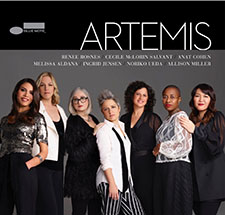 The DPH-1/Warp 1 combination was easy-going and downright enjoyable, exhibiting not a single performance fault through day after day. There are some albums I’ve enjoyed with other amplifiers but, through the Warp 1, one of those first-played albums hit me differently and more positively. The self-titled first album by the all-woman jazz supergroup, “Artemis” (Mack Avenue 2020), is that case in point. The Warp 1 amplifier presented this production in a way not previously heard. I honestly thought I’d missed some tracks the first few times I traversed that album. Through the Warp 1, things had a different texture and temperament. The first few tracks seemed to offer greater fluidity and a more engaging tone. The piano tone is good and solid, the horns are soft and not brittle, the bass is full, the saxophone is deep and resonant, and the percussion has a nice snap. I love it when horns weave gently around one another in an arrangement, and they do so here. Alison Miller’s “Goddess of the Hunt” is a wonderfully complex sound painting with overlapping lines and a fluid, dynamic delivery. There’s plenty of air on this stage of decent depth and width.
The DPH-1/Warp 1 combination was easy-going and downright enjoyable, exhibiting not a single performance fault through day after day. There are some albums I’ve enjoyed with other amplifiers but, through the Warp 1, one of those first-played albums hit me differently and more positively. The self-titled first album by the all-woman jazz supergroup, “Artemis” (Mack Avenue 2020), is that case in point. The Warp 1 amplifier presented this production in a way not previously heard. I honestly thought I’d missed some tracks the first few times I traversed that album. Through the Warp 1, things had a different texture and temperament. The first few tracks seemed to offer greater fluidity and a more engaging tone. The piano tone is good and solid, the horns are soft and not brittle, the bass is full, the saxophone is deep and resonant, and the percussion has a nice snap. I love it when horns weave gently around one another in an arrangement, and they do so here. Alison Miller’s “Goddess of the Hunt” is a wonderfully complex sound painting with overlapping lines and a fluid, dynamic delivery. There’s plenty of air on this stage of decent depth and width.
On Cry Little Buttercup Cry, Cėcile McLorin Salvant’s vocal is expressive and earnestly delivered, though, perhaps a touch flat against the front plane. Textures from brushes the snare and light cymbals taps are warm and grounding. The woodwind and horn solos have noticeable body and resonance. Renee Rosnes’ Big Top is dramatic yet playful and delivers a rousing description of life under the circus big top. This swinging piece needs volume to breathe, so turn it up! I can’t say I have enjoyed this album anymore in any other system than in this current configuration and with this Warp 1 amplifier. A wonderfully playful piece of music rendered expressively and competently.
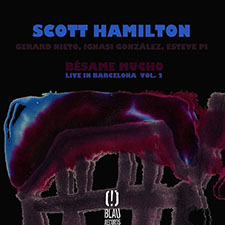 I happened upon Kate Bush’s Pi from “Aerial” (EMI 2005) and gave it a click. Wonderfully theatrical as always, Bush’s delivery on Pi doesn’t disappoint. The pulsating bass grounds the song, allowing the guitars to float around on the depth and dynamics, wafting in and out as the music breathes out deeply and recedes to allow other instrumentation to take root. Perhaps the slight flatness and dryness in the acoustic guitar passages were intentionally done to add contrast to the stage depth presented by the lower frequencies. A compelling presentation that prodded me to sit for a while further. Scott Hamiltons “Bésame Mucho – Live in Barcelona Vol. 2,” recorded in 2010 at sala Jamboree, Barcelona, and released in 2018 (Jazz/Latin-Jazz Ediciones Blau Records), is always a stellar play. Hamilton’s sax work is assured and relaxed as always, imparting great tone. Impressive depth, nuance, and taught imaging always bring this dimensional presentation back for replays. The dynamic contrasts presented crank up the listening fun. While enjoying Adam Nussbaum’s When I Was a Cowboy, from his 2020 “Leadbelly Reimagined” Sunnyside release, things start in a folky, bluesy way and then take sudden a turn, as the drums command the floor, bringing both dynamics and air. As the players layer their bluesy lines. Laid back in a “Bill Frisell way,” the instrumental picture grew large and powerful between the speakers, with a lot of punch and heft. The Warp 1 does laid back very well. Waltz Prelude from the Alan Broadbent Trio’s “New York Notes” delivers a notable display of telepathic trio work. The brushes are wonderful, bold, and fleshy, the bass defined, and the piano work contemplative. There’s tremendous air and depth here, as this trio gives the listener ample rewards for the few minutes this track plays.
I happened upon Kate Bush’s Pi from “Aerial” (EMI 2005) and gave it a click. Wonderfully theatrical as always, Bush’s delivery on Pi doesn’t disappoint. The pulsating bass grounds the song, allowing the guitars to float around on the depth and dynamics, wafting in and out as the music breathes out deeply and recedes to allow other instrumentation to take root. Perhaps the slight flatness and dryness in the acoustic guitar passages were intentionally done to add contrast to the stage depth presented by the lower frequencies. A compelling presentation that prodded me to sit for a while further. Scott Hamiltons “Bésame Mucho – Live in Barcelona Vol. 2,” recorded in 2010 at sala Jamboree, Barcelona, and released in 2018 (Jazz/Latin-Jazz Ediciones Blau Records), is always a stellar play. Hamilton’s sax work is assured and relaxed as always, imparting great tone. Impressive depth, nuance, and taught imaging always bring this dimensional presentation back for replays. The dynamic contrasts presented crank up the listening fun. While enjoying Adam Nussbaum’s When I Was a Cowboy, from his 2020 “Leadbelly Reimagined” Sunnyside release, things start in a folky, bluesy way and then take sudden a turn, as the drums command the floor, bringing both dynamics and air. As the players layer their bluesy lines. Laid back in a “Bill Frisell way,” the instrumental picture grew large and powerful between the speakers, with a lot of punch and heft. The Warp 1 does laid back very well. Waltz Prelude from the Alan Broadbent Trio’s “New York Notes” delivers a notable display of telepathic trio work. The brushes are wonderful, bold, and fleshy, the bass defined, and the piano work contemplative. There’s tremendous air and depth here, as this trio gives the listener ample rewards for the few minutes this track plays.
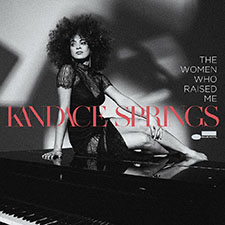 On my 24/96 home rip of the vinyl of Angel Eyes, a Kandace Springs duet with Nora Jones, from Springs’ “The Women Who Raised Me” (Blue Note Records), their similar smokey-toned and textured voices mesh quite well, like two sisters singing together. The piano’s image is rock solid, bass is full, and percussion relaxed and nicely dimensional. Here, the ambiance, air, and textures shine. With Springs’ cover of Pearls, the low bass swells and minimal percussion create a low-frequency-driven, wide and deep atmosphere. This production is hypnotic, intimate, involving, depth-filled and stunning – the low frequencies envelop you as the air expands around you. Springs’ Pearls is hauntingly intimate and hypnotic, presented extremely well by the Warp 1.
On my 24/96 home rip of the vinyl of Angel Eyes, a Kandace Springs duet with Nora Jones, from Springs’ “The Women Who Raised Me” (Blue Note Records), their similar smokey-toned and textured voices mesh quite well, like two sisters singing together. The piano’s image is rock solid, bass is full, and percussion relaxed and nicely dimensional. Here, the ambiance, air, and textures shine. With Springs’ cover of Pearls, the low bass swells and minimal percussion create a low-frequency-driven, wide and deep atmosphere. This production is hypnotic, intimate, involving, depth-filled and stunning – the low frequencies envelop you as the air expands around you. Springs’ Pearls is hauntingly intimate and hypnotic, presented extremely well by the Warp 1.
The Wrap
Is the Warp 1 a perfect amplifier? No, few amplifiers might be considered that, and those recommendations would still come with caveats. What the Warp 1 does for its mere $1499 price (Sale Priced at $1199) is extraordinary, delivering weight and dynamics in a musically satisfying way that defies its price category.
If you’re curious just how far Class-D amplification has come, give the affordable Warp 1 a listen. The Warp 1 doesn’t sound at all like any of the Class-D’s I’ve experienced to date – It’s a big step forward from its predecessor, the EP 100.2SE, which I also enjoyed in its day. While I have minor quibbles, its errors are those of omission, not commission. The Warp 1 is as engaging as it is affordable, an amp that offers a surprising amount of air, ease, and musicality for extending listening enjoyment. While we don’t get many visitors these days due to COVID, both of my audiophile friends who stopped by to hear the Warp 1 said they wanted one. This baby has both heart and soul in its “DIY” DNA.


greg voth
Specifications:
LSA Discovery Warp 1 stereo power amplifier
Pricing:
$1499.00
Sale Priced at $1199.00 delivered
Contact: Underwood Hifi
Walter Liederman
Phone: 770.667.5633
Email: underwoodwally@aol.com
Website: www.underwoodhifi.com/products/lsa-electronics
One thought on "LSA Warp 1 Power Stereo Amplifier by Greg Voth"
Leave a Reply
Stereo Times Masthead
Publisher/Founder
Clement Perry
Editor
Dave Thomas
Senior Editors
Frank Alles, Mike Girardi, Russell Lichter, Terry London, Moreno Mitchell, Paul Szabady, Bill Wells, Mike Wright, and Stephen Yan,
Current Contributors
David Abramson, Tim Barrall, Dave Allison, Ron Cook, Lewis Dardick, John Hoffman, Dan Secula, Don Shaulis, Greg Simmons, Eric Teh, Greg Voth, Richard Willie, Ed Van Winkle, Rob Dockery, Richard Doron, and Daveed Turek
Site Management Clement Perry
Ad Designer: Martin Perry




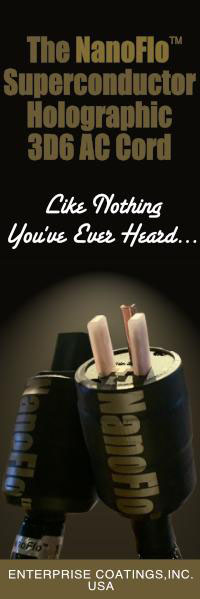


The XLRs look foreign to me. Why are they so unusual, or is it poor lighting